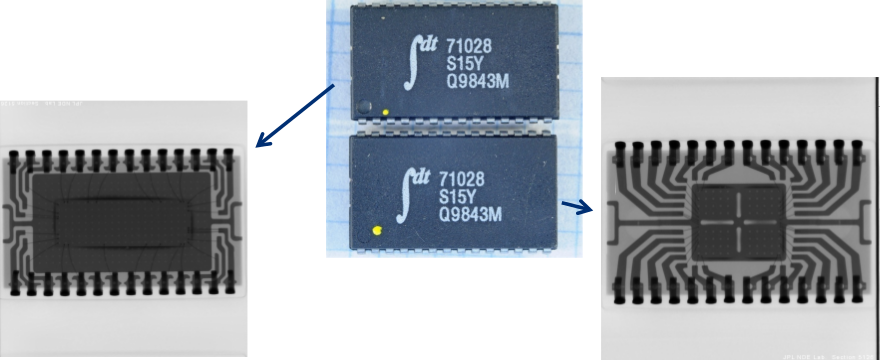Latest News & Events
Understanding the Counterfeit Components Problem

By Steve Zweig
About four years ago, a component distributor called me and asked about using our x-ray inspection equipment to detect counterfeit components. At the time, I thought this was an isolated incident.
I had no idea that the counterfeit components problem would reach epidemic proportions.
The U.S. Department of Homeland Security and the U.S. Chamber of Commerce have reported that the incidence of counterfeit components has increased dramatically over the past decade. One estimate values the worldwide market for counterfeit electronics at up to $10 billion annually and China, particularly the Shenzhen area, is named as the source of approximately 70 percent of those counterfeits.
My interest in this problem grew as component distributors began buying and using Glenbrook’s x-ray inspection equipment to build image libraries of known good parts. They checked images of incoming parts (that had a history of being counterfeited) against the images in their libraries to verify that the incoming parts were not counterfeits.
I learned from Glenbrook’s customers that most recycled parts come from electronic scrap, which serves as raw material to counterfeiters. Workers remove parts with their bare hands or with basic tools, with no protection from contamination and no ESD precautions. As a result, parts labeled “recycled” aren’t always guaranteed to work properly.
The parts are then sanded to remove the original marking and then blacktopped and remarked. Blacktopping is the application of a black filler to the top surface of a part. Afterwards, the part may be marked with a different name, logo and part number. For example, an original Xilinx part might be remarked as a Motorola part.
I wanted to know exactly how these counterfeit parts make their way into the inventories of reputable companies, so I decided to track the parts back to their source to see how easily counterfeit or bad products can be bought and circulated into the component distributor channel. To do this, I worked with several of Glenbrook’s customers to develop a list of parts that have a history of being counterfeited. The part numbers were AD7871JP, CD4000BE, MM74C089, LH5164A and LM565CN.
Then, working with Glenbrook’s Hong Kong associate, I had one of the office’s Chinese engineers go to the Shenzhen market with the list of parts given to me by our customers. At the market, the engineer bought five to ten of each lot of components, selecting both new and recycled parts.
I then used Glenbrook’s JewelBox 70T real-time x-ray inspection system (which has up to 1,200x magnification) to inspect and capture images of each part. Then, Chase Components, a distributor that is also a Glenbrook customer, used their expertise in visual inspection to help with identifying the counterfeit or bad parts.
What I learned is that while some defects can be spotted visually, others can only be identified with the use of x-ray inspection. A distributor that wants to provide its customers with good components must use both techniques. If you’d like a copy of this study or if you have any questions about the study, my methodology or the JewelBox 70T real-time inspection system, feel free to email me at szweig@66.147.240.151.

